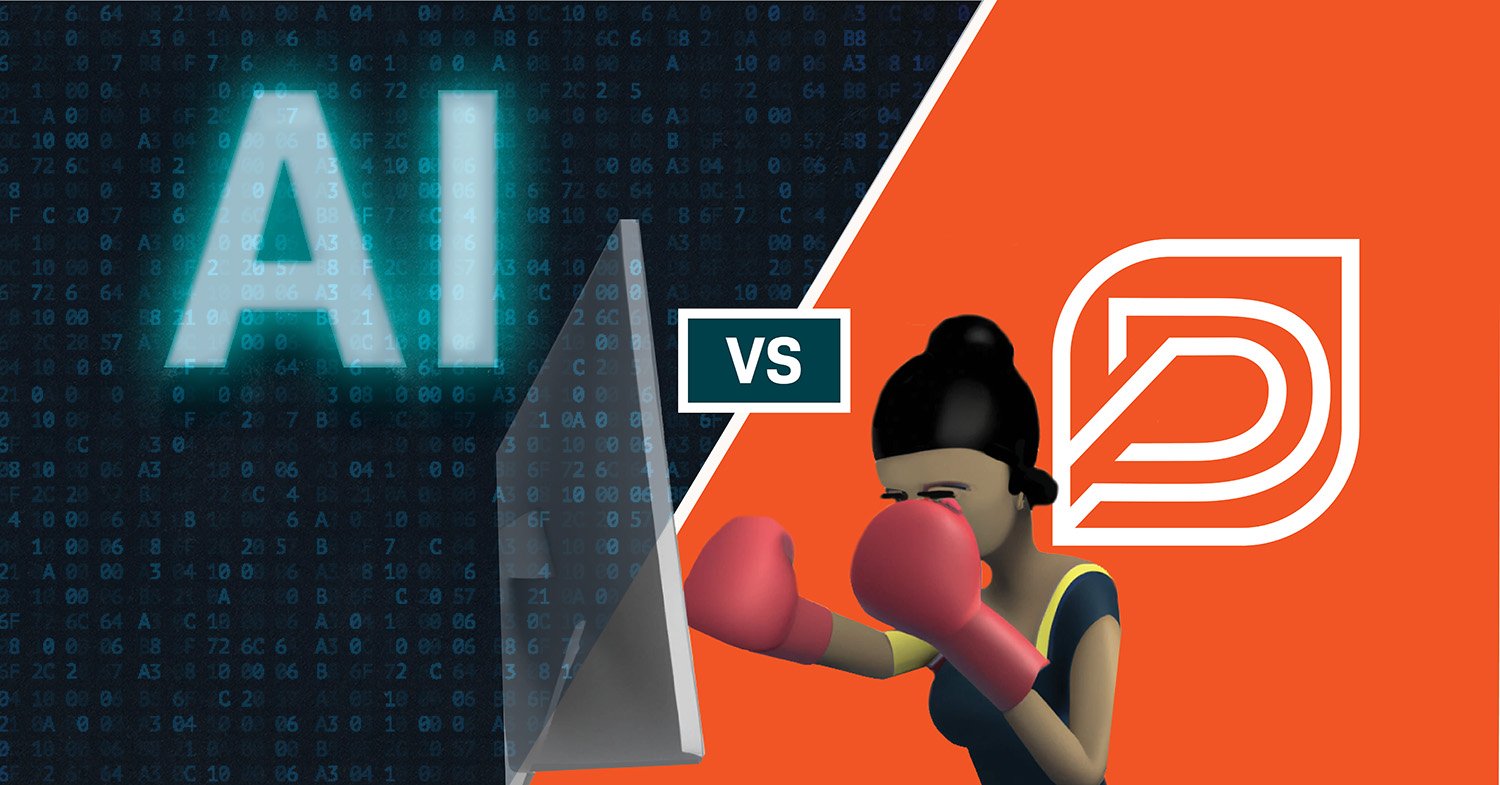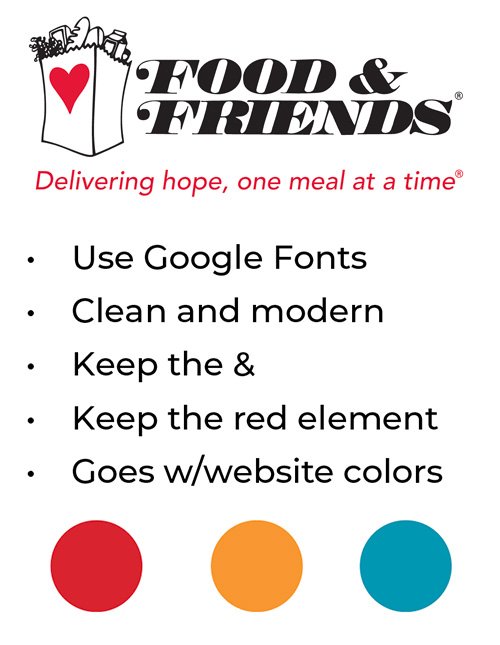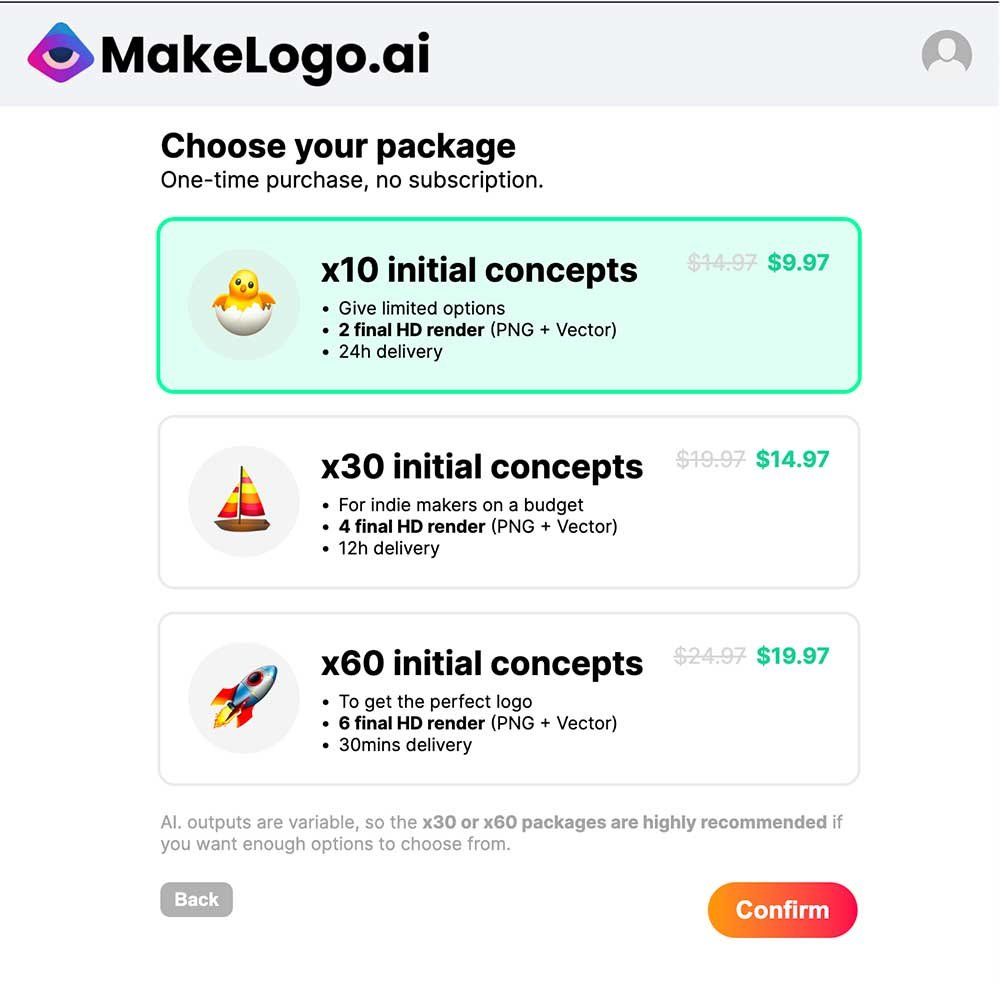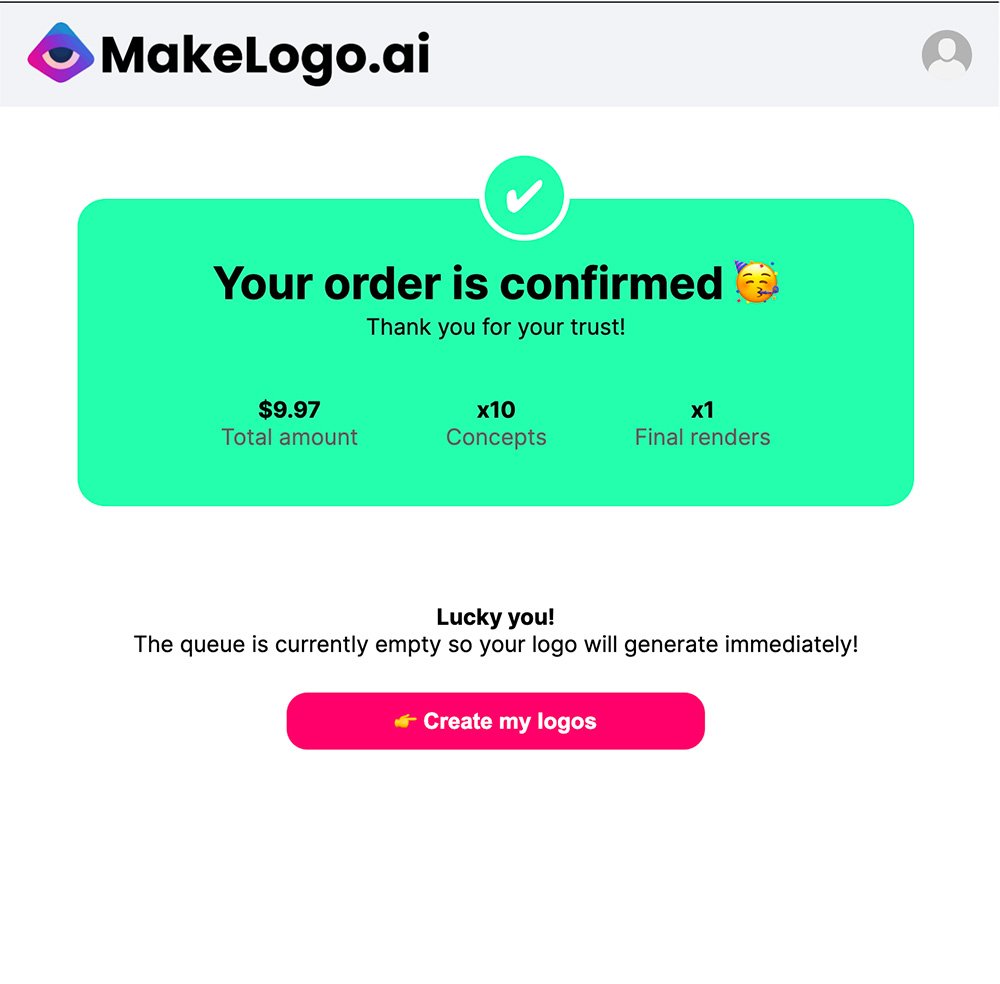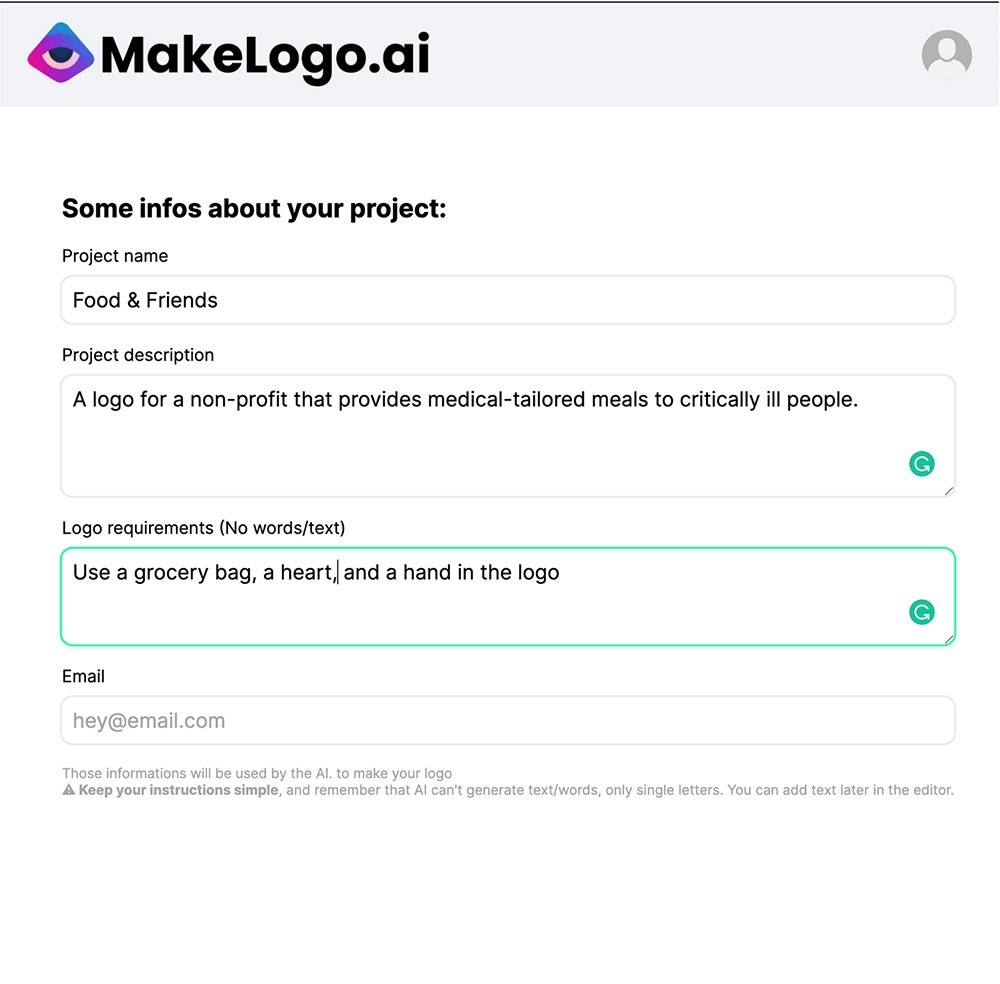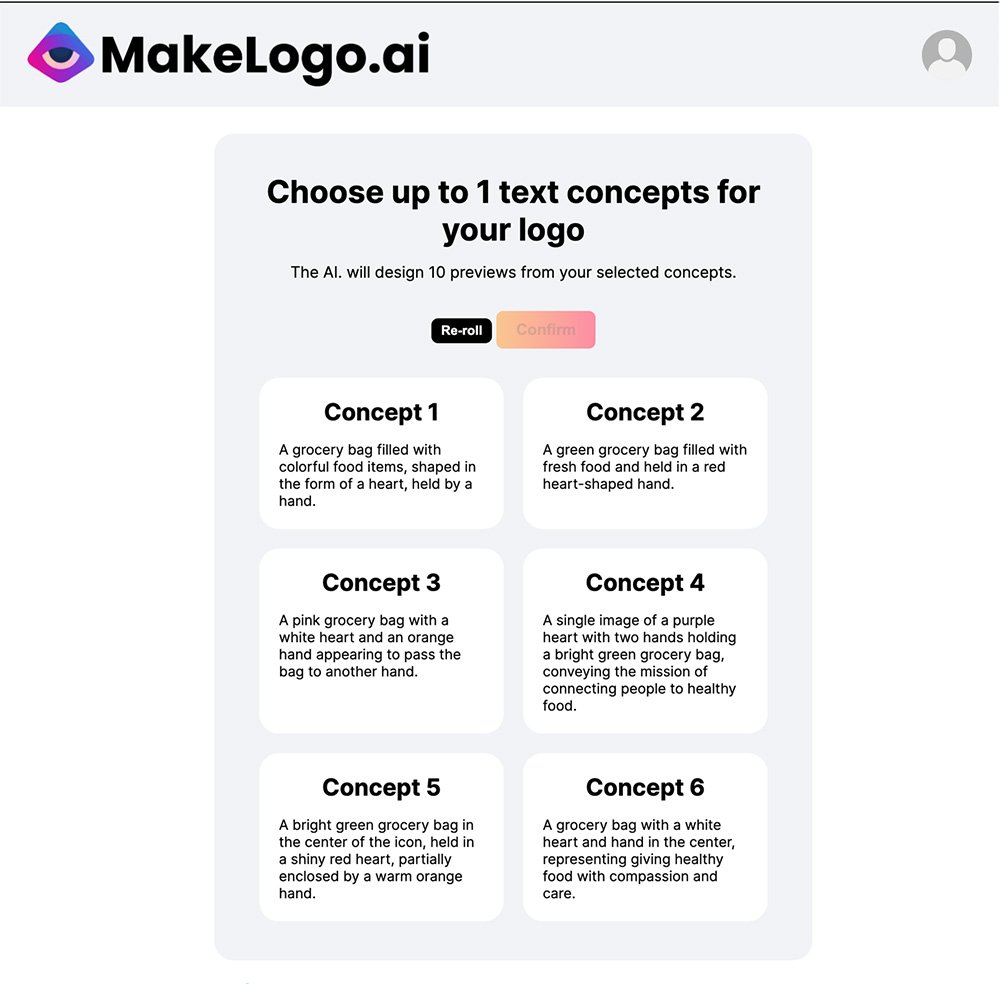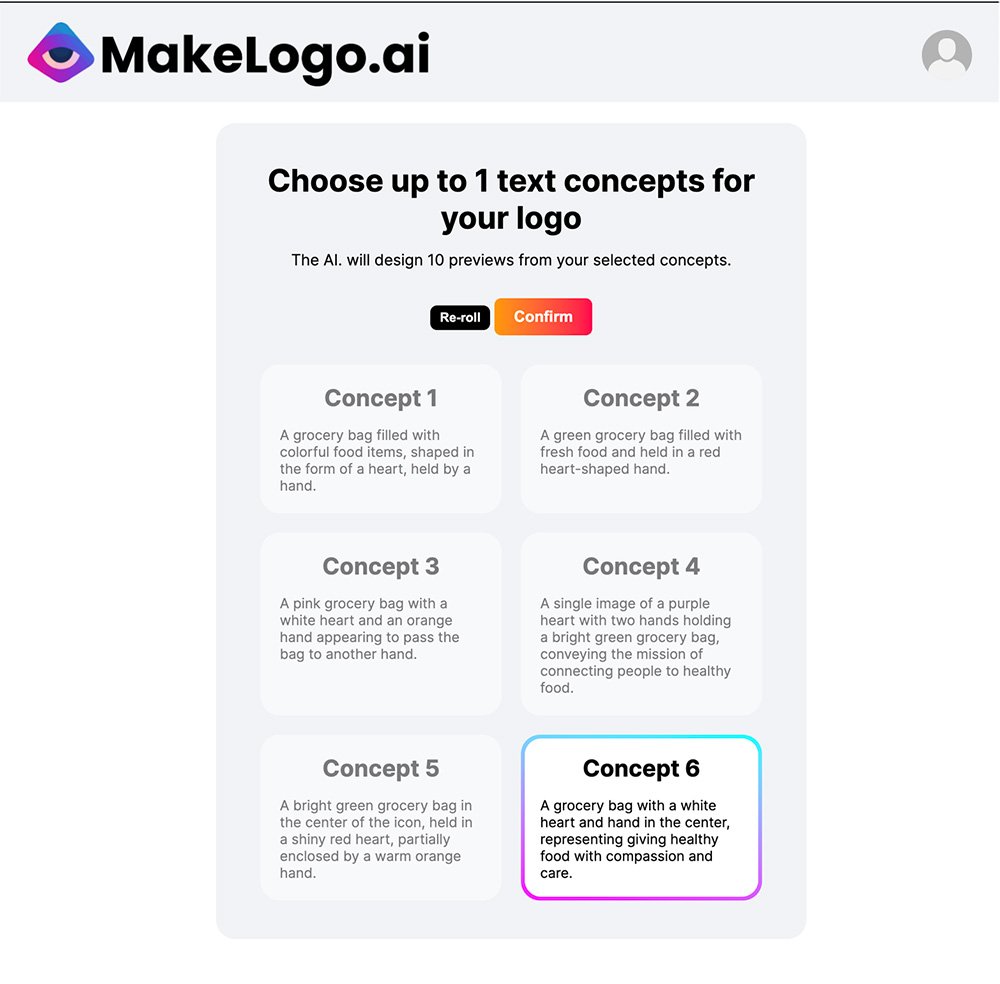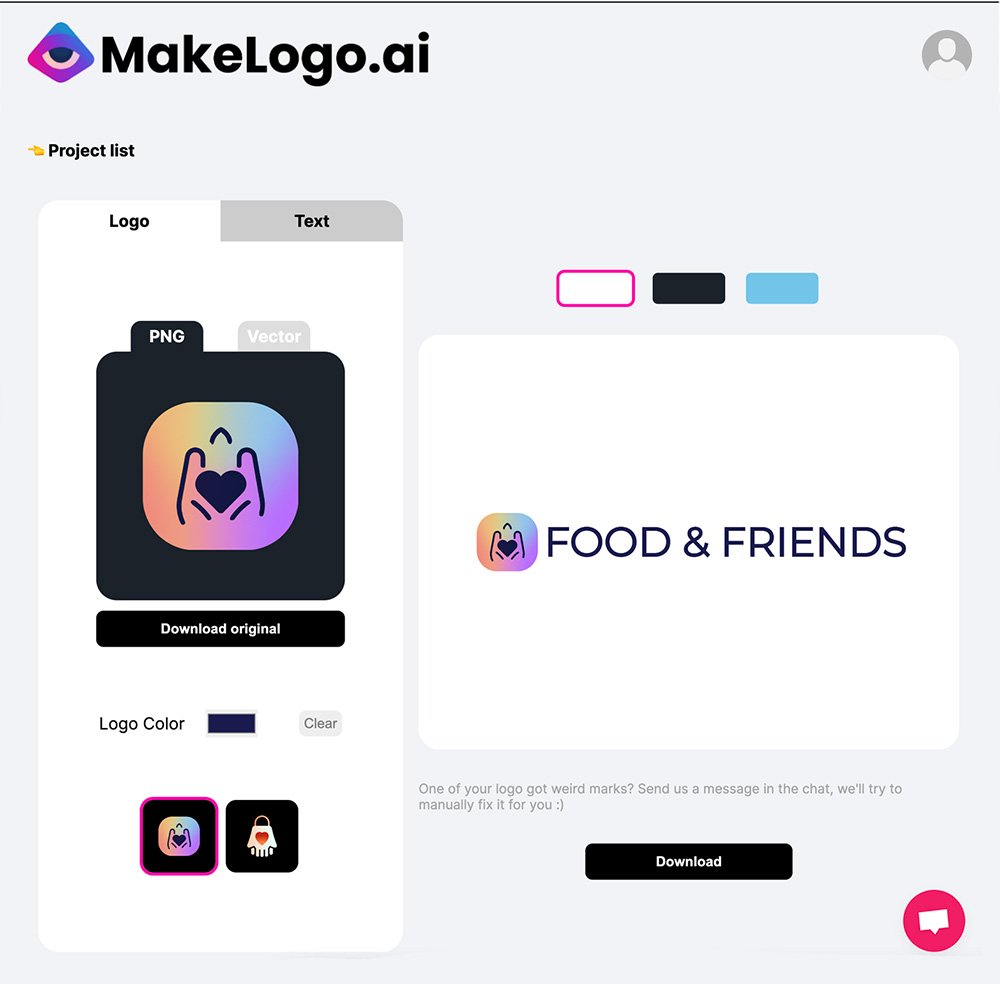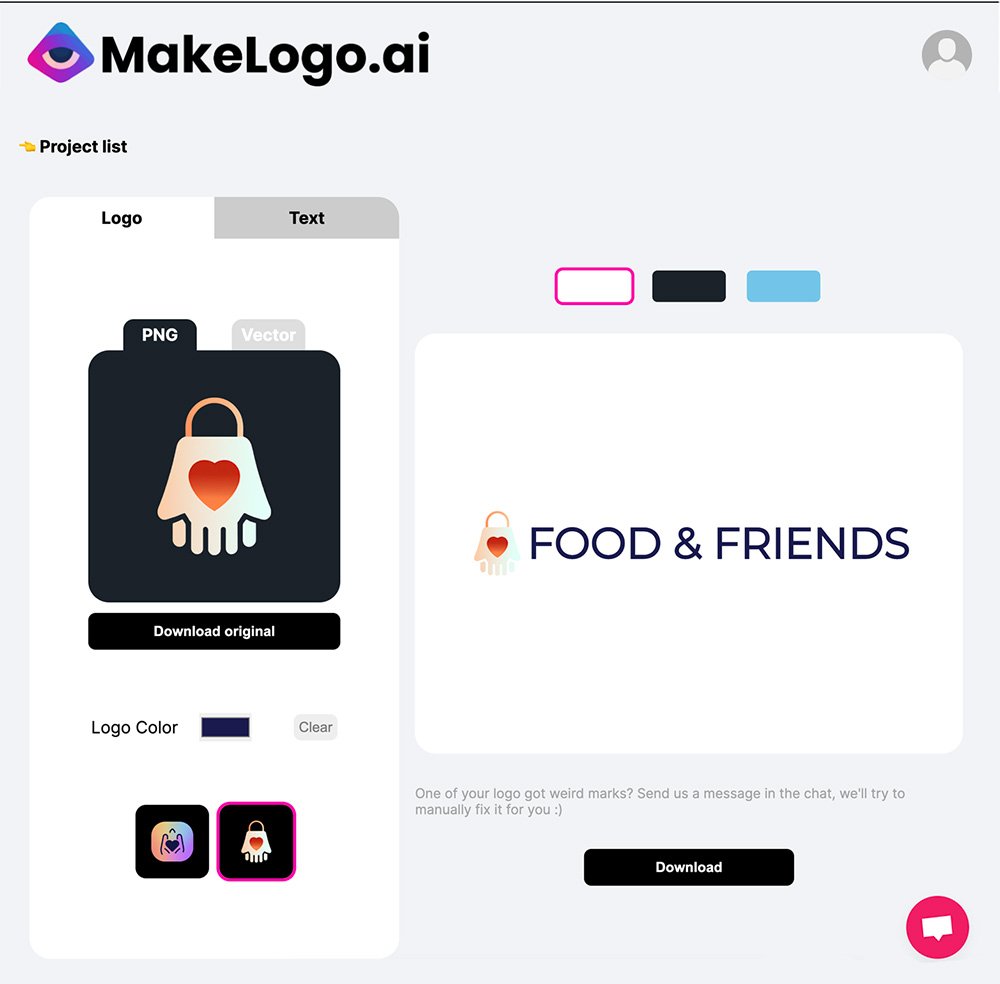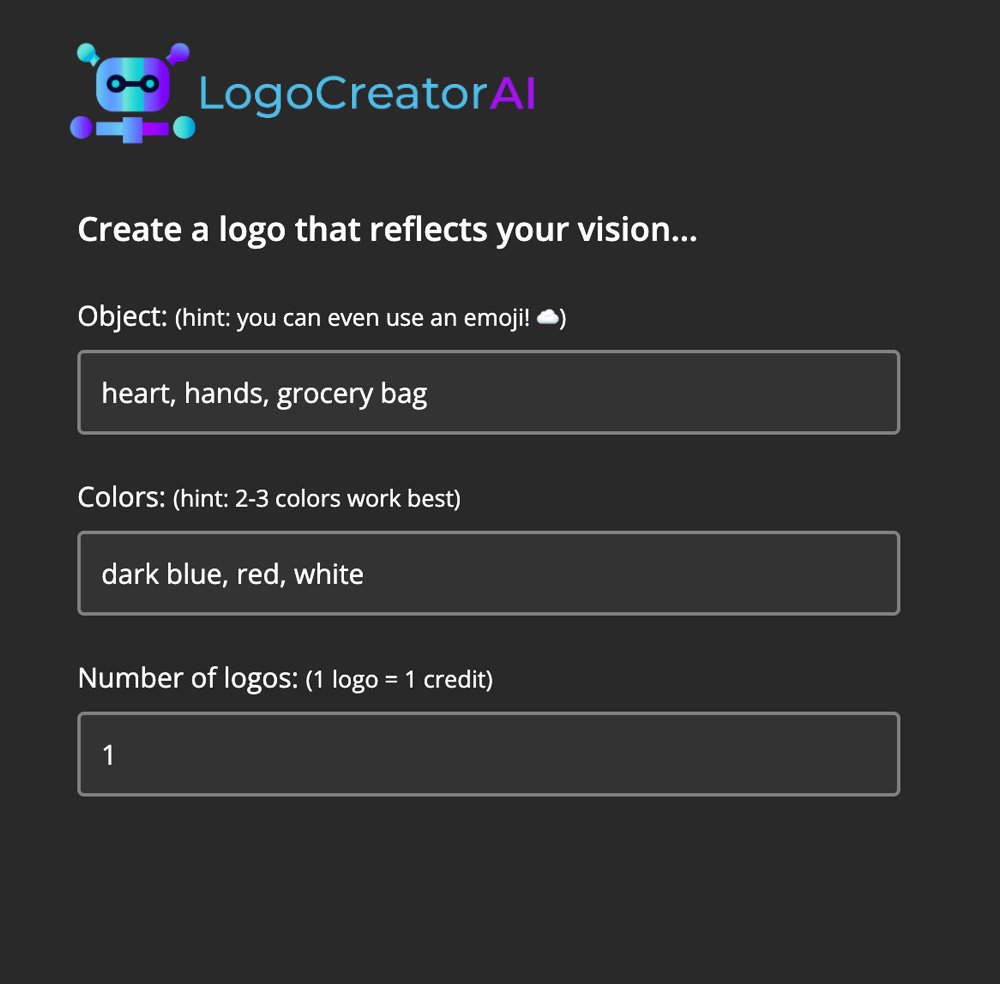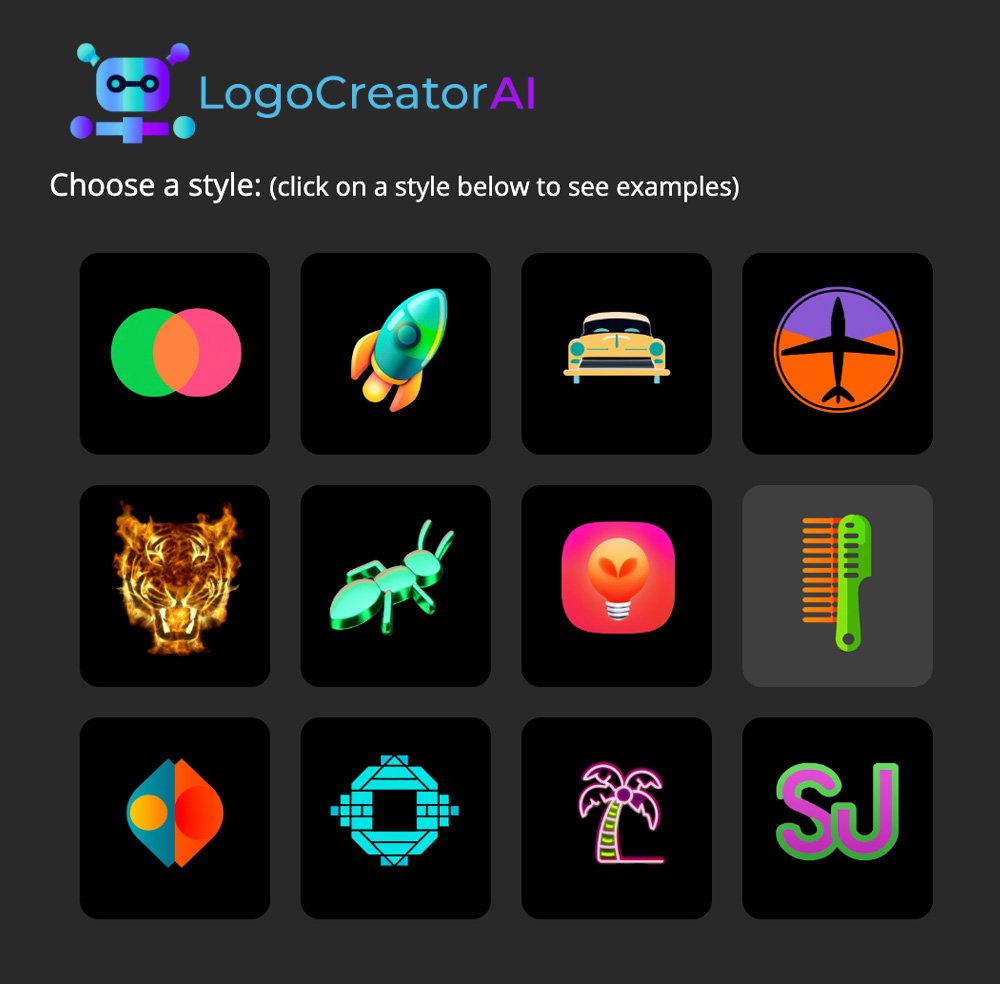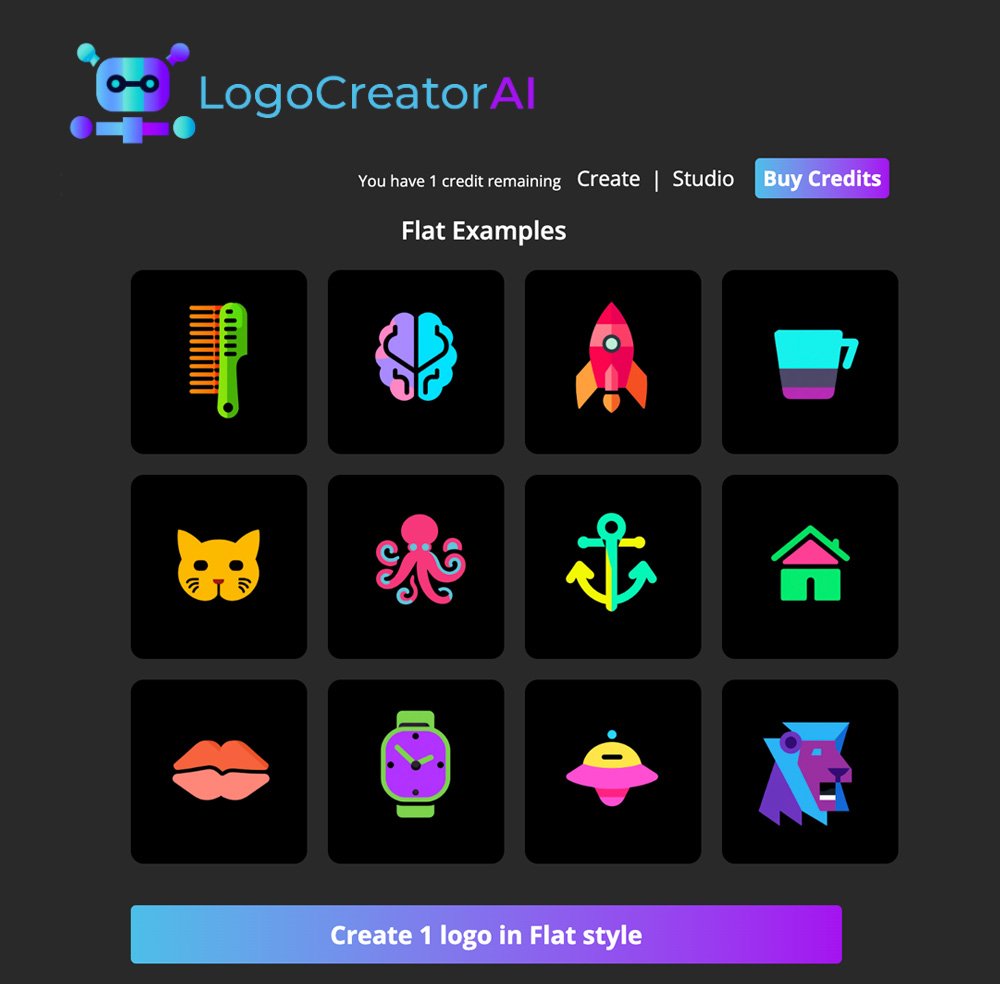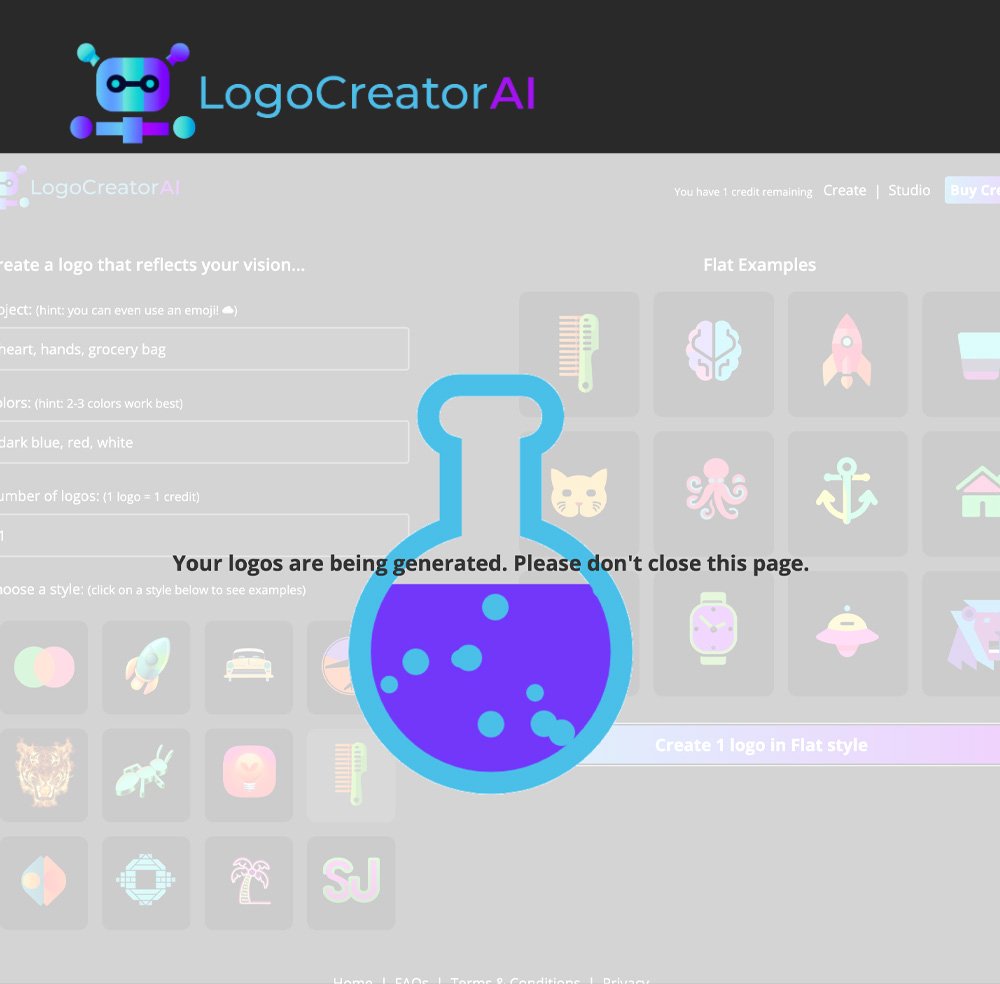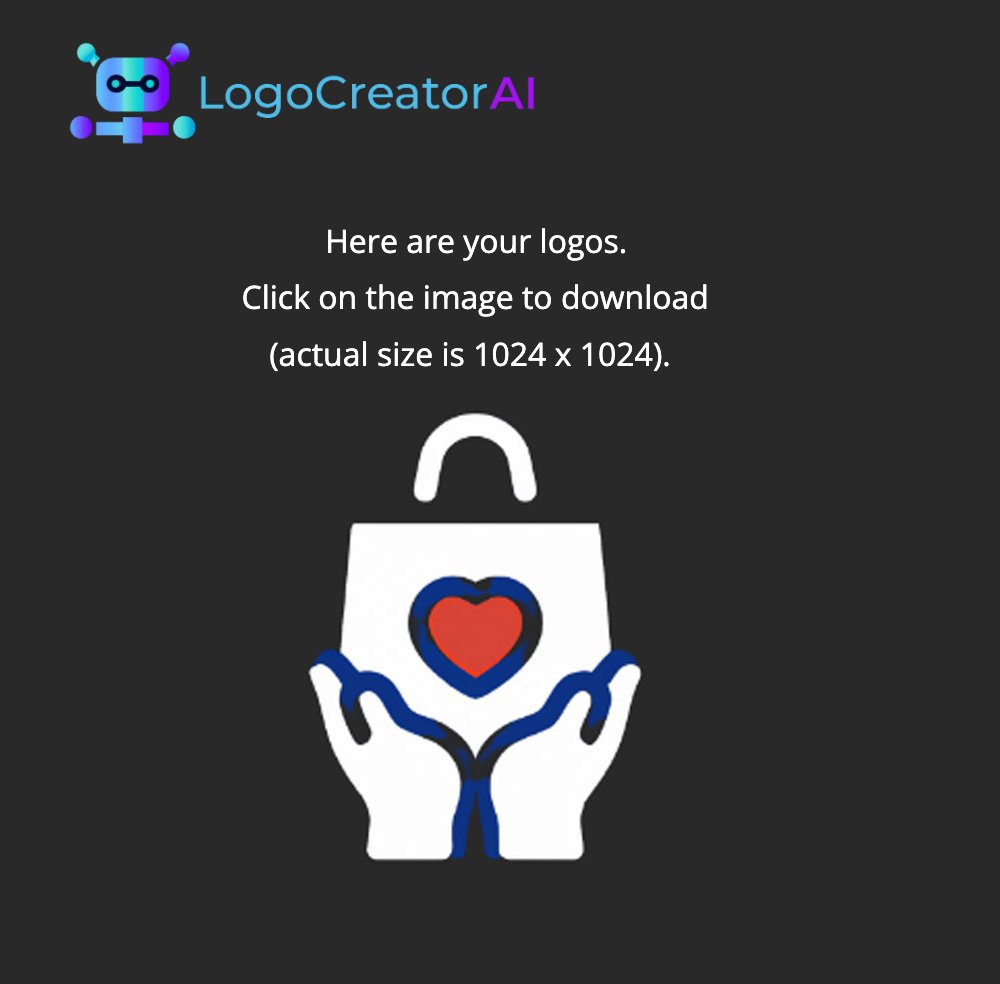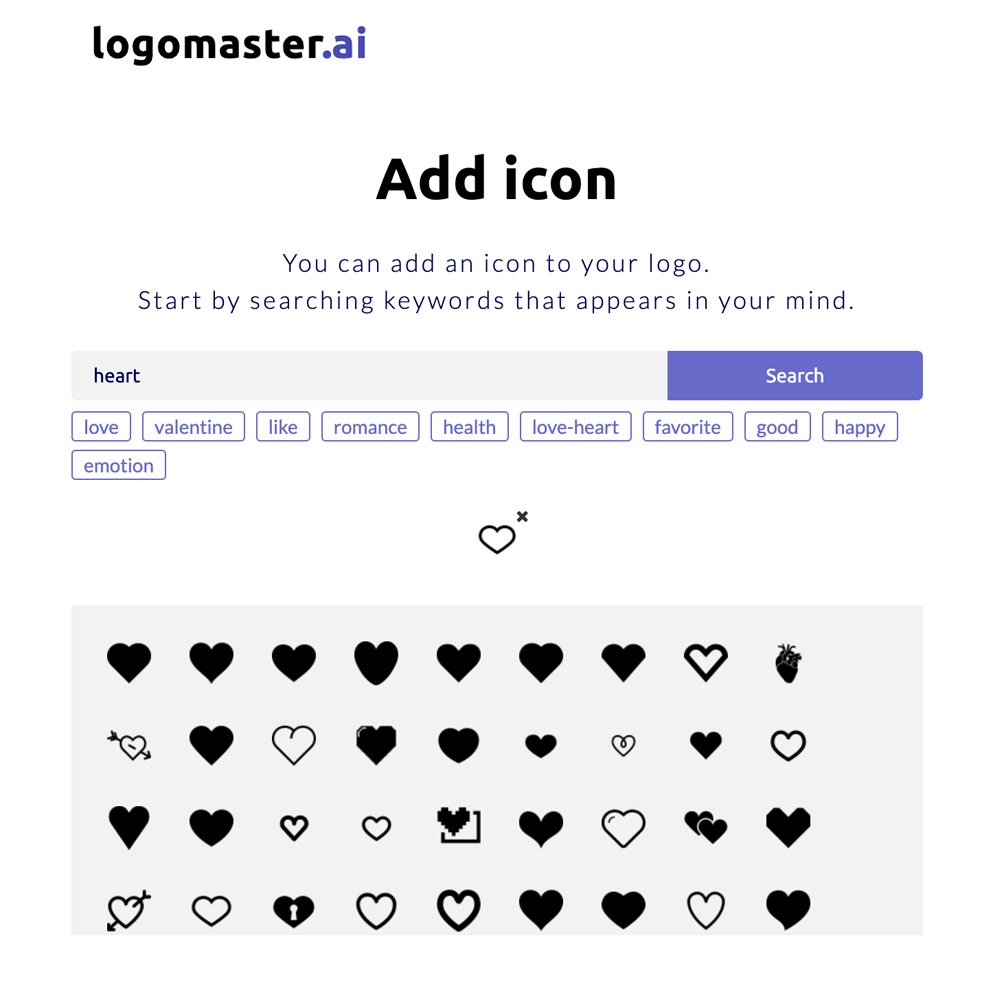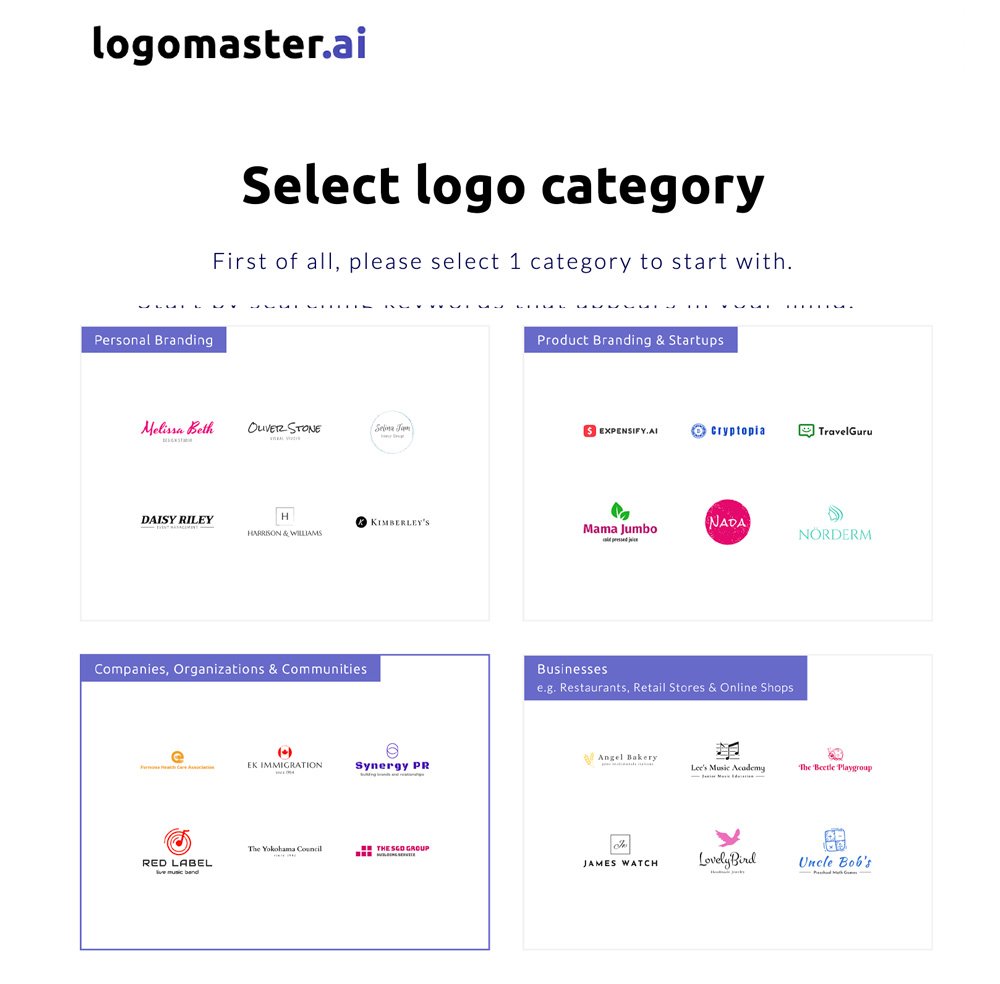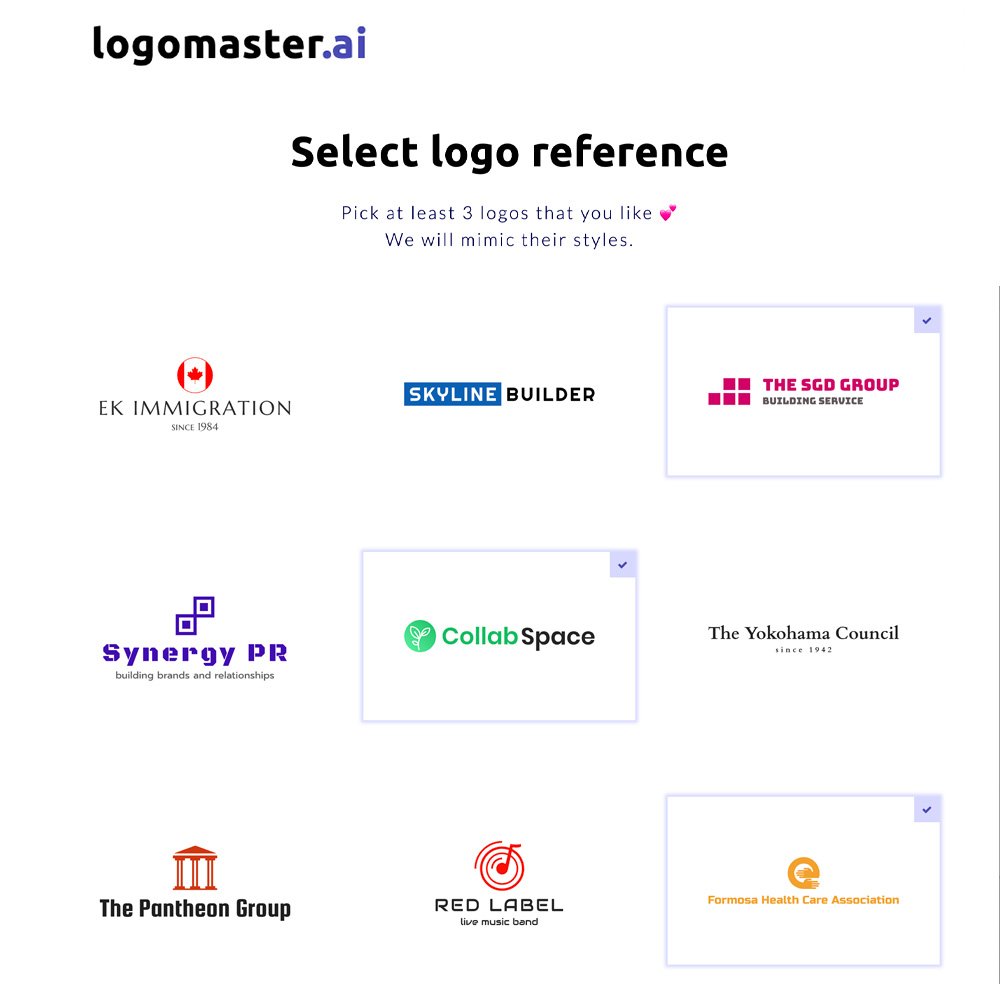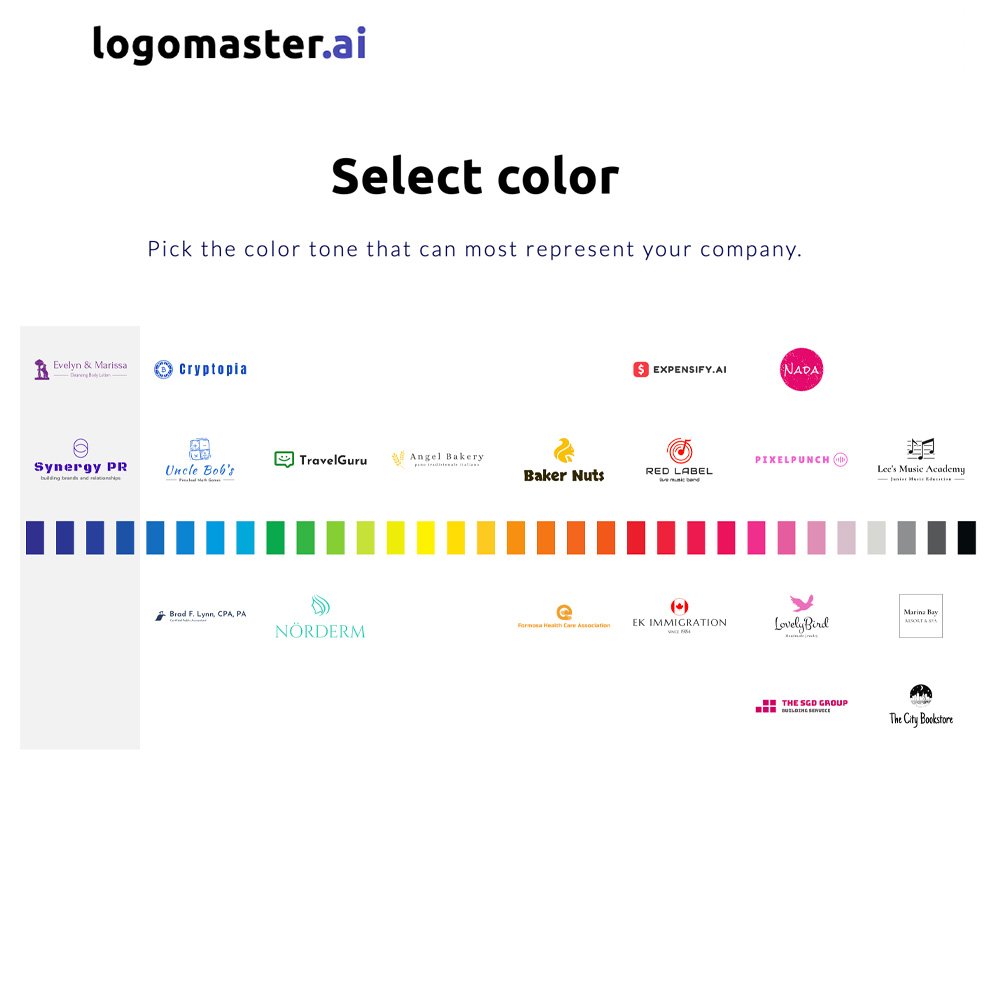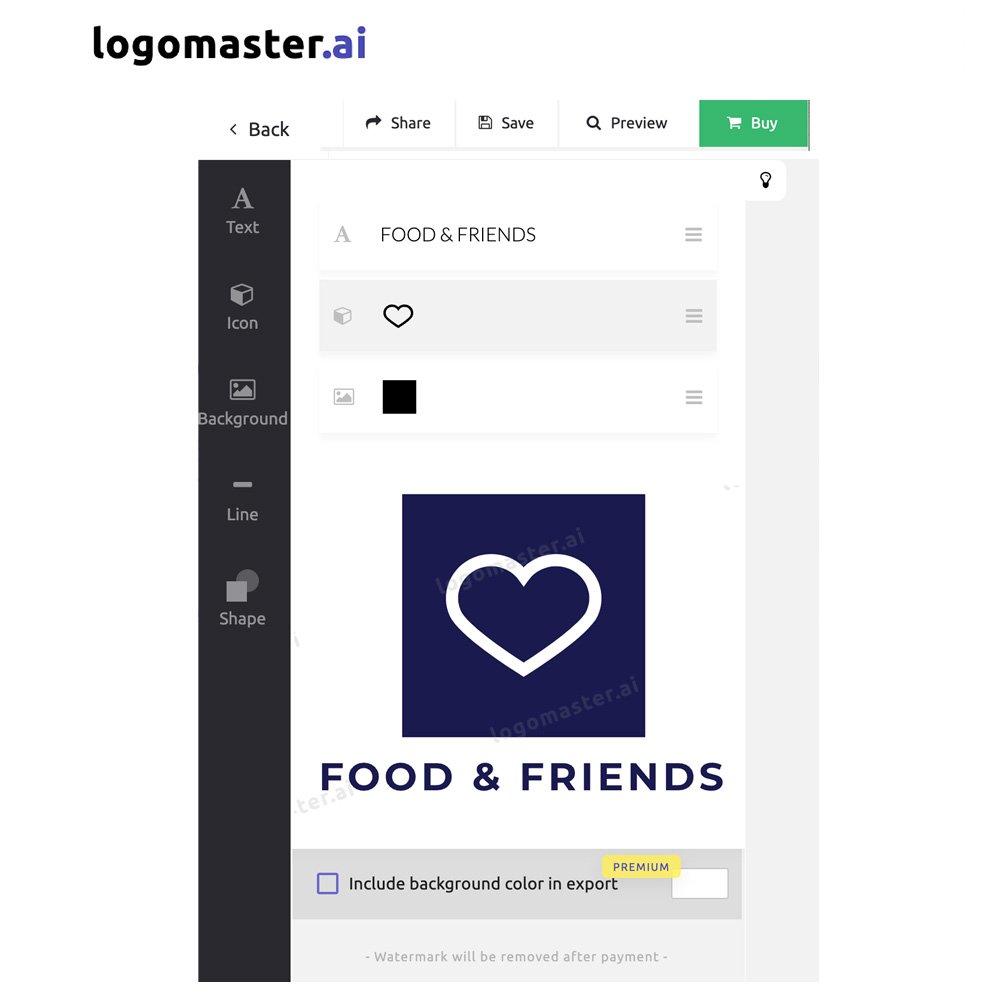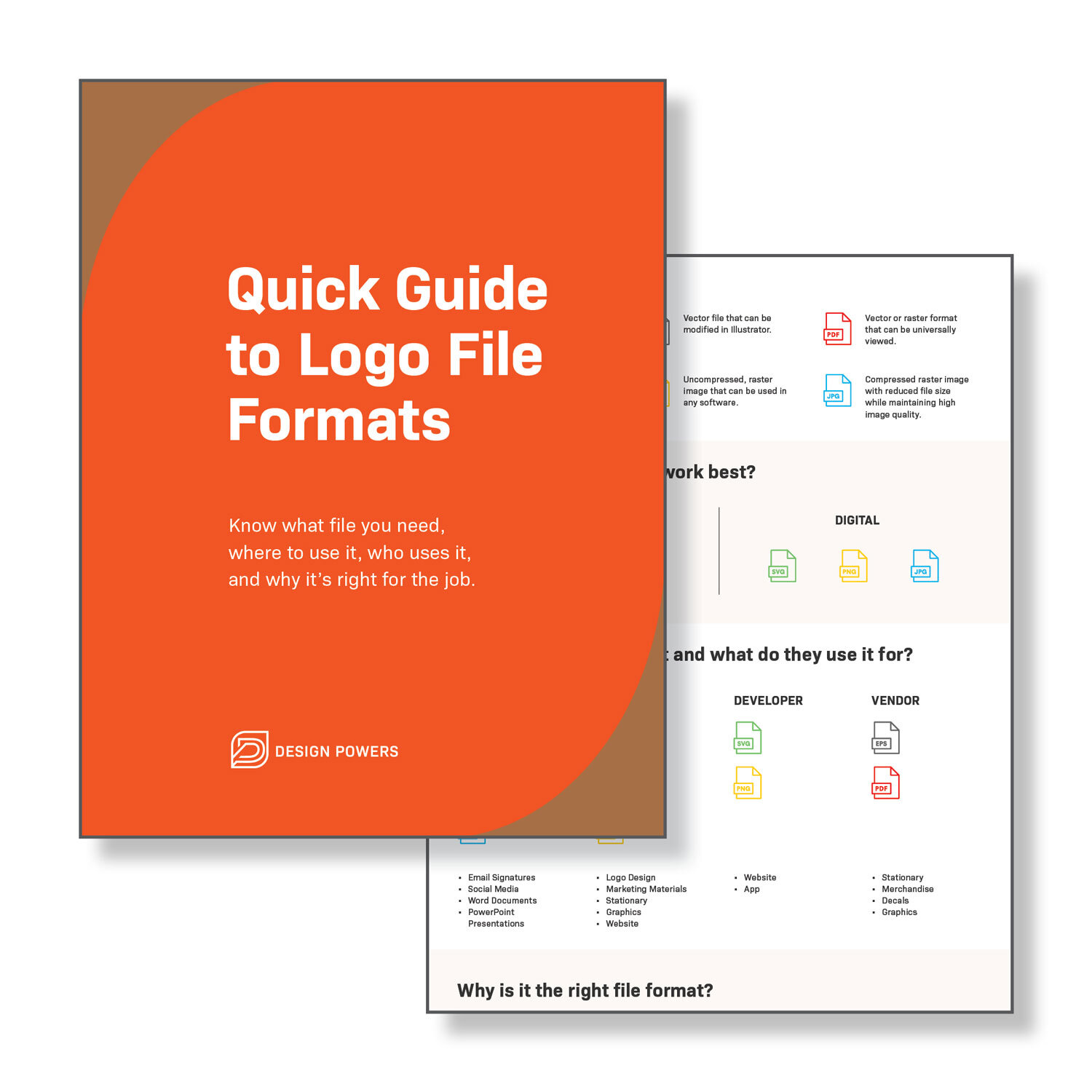Can AI create a logo as good as a professional graphic designer?
With all the buzz about Artificial Intelligence (AI), we wanted to see what it could produce using a recent client creative brief for a logo design we just completed.
AI-generated image on top of a graphic designer-generated layout!
OUICK LINKS
Why do we love logos so much?
Whenever I tell someone I’m a graphic designer, they usually respond excitedly, “Oh, you design logos!” Although I create a lot of visual communication, I appreciate their enthusiasm and say “YES! I design logos!”
PEOPLE LOVE LOGOS! ❤️ We wear the logos of our beloved sports teams, fashion designers, musicians, and gazillions of other branded things. A logo immediately builds a connection, starts a conversation, conveys status, or can be worn to repel, cause friction or take a stand.
A logo is often the first visual that businesses think they need after finishing their business plan. And why not? It’s fun to imagine the possibilities of how to represent your expertise and services. Once you have a logo, your business is real.
“There are some teams and logos you see, no matter where you are in the world, and you know exactly who they are and what they mean.”
Luxury brands know their logos convey status and cover their fashions with them. Although I’m not cool enough to wear Versace, Fendi or Gucci, it’s fun to create a collage of people who are!
Since we primarily work with small to medium-sized professional service businesses, our logo design process is streamlined compared to designing logos for products or large companies. Most of our focus is on delineating services, creating custom content, photography and a website using best practices.
I don’t want to minimize the importance of a good logo because it is one of the first things a potential client sees and a professionally designed logo is essential. It serves as a visual representation of the company’s brand and identity, and it helps establish recognition in the minds of clients.
It should be unique, memorable, and easily recognizable. Furthermore, clients form an impression of a business based on its logo design. If the logo looks unprofessional or outdated, potential clients may doubt the reliability and credibility of the company's services or products.
On the other hand, if it looks modern and attractive, they may be more likely to trust the business offering. A professionally designed logo also provides a sense of unity to all aspects of a company’s marketing material — from website design to social media pages — helping build brand loyalty over time.
Before I jump into what AI can do, a quick primer on what we human designers do when we design a logo for a company.
“A picture is worth a thousand dollars...and thousands more!”
How does a professional graphic designer create a logo?
Step 1: Define Brand Identity
Before starting the design process, we need a clear understanding of our client’s brand. This includes the company's mission, values, and target audience. This information will serve as a foundation for the design and help to guide the direction of the logo.
Step 2: Research and Inspiration
After understanding the brand, the next step is to gather inspiration and research other logos and brands in our client’s industry. We look at what has been done before and what trends are currently popular. It's also important to consider what we want the logo to communicate and how it should stand out from the competition.
Step 3: Conceptualization, Sketching and Essential Elements
Once we have done the research and gathered inspiration, we begin to conceptualize and sketch out ideas for the logo. The essential elements we consider when designing a logo are color, typography, and shape.
The color palette is a very important aspect as it can evoke emotions and create memorable experiences for the client. Different colors have different meanings so researching and understanding the emotional implications of using specific colors is essential.
Type is also incredibly important as they help to express the personality of the business brand. Selecting typography that reflects the overall message helps to effectively communicate with clients while ensuring legibility and making sure it stands out from other brands. Finally, shapes play an essential role in helping to create depth, balance, movement and meaning.
We present several concepts, the client provides feedback and we make the necessary revisions.
Step 4: Refining and Finalizing the Design
After a concept is selected, we refine and finalize the design. This includes making any necessary adjustments to the size and proportions of elements, as well as selecting the final color palette. This could be one round of iterations or several. We prepare the final files, such as vector (eps) and raster versions (jpeg and png) of the logo, in various file formats. We wrote a blog post about logo file types with a helpful pdf quick guide on logo file formats—download it for future reference!
Step 5: Brand Guidelines
The final step is to create logo guidelines, which outline the proper usage and other visual elements of the logo. This will ensure consistency in all future marketing materials, such as business cards, websites, and other collateral and promotional items.
Working with a professional graphic designer to design a logo is an investment and if done well could be the mark associated with your business for a decade or two if not longer. A well-designed logo makes a lasting impression.
“Computers are to design as microwaves are to cooking.”
How does AI create a logo?
Before ChatGPT came out in November of 2022, I’d signed up for a beta invitation to DALL•E 2 two months earlier. It’s an AI platform that creates images and art from a description in natural language. All the examples they show on the platform were super cool.
Too bad everything I tried to “train” the AI to execute turned out kinda weird. I even tried retyping the descriptions used to get those amazing renderings shown and did NOT get the same results. I guess AI doesn’t like me.
I’m not a programmer so what is happening under the hood of AI systems is a bit of a mystery.
My understanding is algorithms generate art based on varied methodologies. One is to take an uploaded image and use computer vision techniques to segment the image into its various parts. Then, using machine learning algorithms, the algorithm can analyze each segment separately and determine which elements are important for creating the art. Once these elements have been identified, the algorithm then creates art that incorporates those elements in a pleasing way.
Another approach is to take an uploaded image and use object recognition algorithms to identify objects within the image such as animals, buildings or other shapes that could be used as the basis for art. The algorithm could then combine these objects in an eye-catching way or add text or other elements to enhance the overall look.
^Full Disclosure: AI wrote the two paragraphs above. I told you I don’t know anything about how AI generates art. I did edit the paragraphs if it makes you feel better.
“Logos are a graphic extension of the internal realities of a company.”
The creative brief and backstory
Food & Friends logo, in use for over 20 years and the concept requirements.
Food & Friends kitchen, offices and distribution center located in Washington DC.
Last summer we were contacted by Food & Friends, a community-based organization in Washington, D.C. that provides freshly prepared, home-delivered meals, groceries, and nutrition counseling to people living with life-challenging illnesses, including their dependents and caregivers.
Food & Friends was started in a church kitchen on a shoestring budget during the AIDS epidemic. “We’re centered on compassion and surround our clients with a caring staff and volunteer community,” said Carolyn Schmidt, the Chief Development Officer.
Food & Friends delivered 4k meals a day, or 1.2 million meals last year to clients across 5,300 square miles! They’re recognized as one of DC's best-managed non-profits so it’s an honor to have the opportunity to design a new logo for them.
I began my research by touring their impressive facility and took photos of all the varied ways the logo gets used. I also spoke with the marketing team and volunteers who are passionately connected to the mission. Finally, I had them fill out a brand journal that we give to each of our clients to get their understanding of their brand.
We researched similar organizations and logo marks then presented six concepts to a small working group who selected three to present to their board.
The first round of concepts was presented to the working group. The top three were preferred but the hands hugging the bag was the favorite.
Graphic Designer Logo Concepts • Rounds 1 & 2
The clear favorite was the concept of the cutout hands hugging the bag and connected by a rainbow. It conveyed their mission of volunteerism, caring, and Food & Friends’ roots in the gay community.
But when the concepts were presented to the board, there was a concern that the cutout hands against white could be misconstrued. After a lot of discussion with the working group and some lamentation, (a lot of folks liked the bag concept), we decided to go in a different direction.
The second round of concepts included a bag, hands, hearts, even a smile and reductive marks using varied colors and typography. Again, the bag was the favorite but the hands holding the heart were a close second. The double F with the bottom of the F letter form with (rotated) hearts was third.
The second round of concepts was presented to the working group. The bag with the rainbow spectrum inside was liked but some thought the smile was too simplistic. The hands holding the heart and the double-F with rotated hearts were also well-liked.
Round 3 and the Winner!
I combined the liked elements from round 2 in varied ways and we had a winner! The process took several months which isn’t unusual when there are a lot of decision-makers, considerations, and the winter holidays.
The third round of concepts was presented and the final logo concept selected!
AI’s Logo Design Concepts
Since AI is a tool, it can only generate art based on the prompts given. It also doesn’t understand the nuanced backstory. But for the purposes of this experiment, you’ve read the summation of how we arrived at a final mark for Food & Friends. Armed with that knowledge and the finished logo, you can evaluate what the AI produced.
I found the AI logo generators by going to Futurepedia The Largest AI Tools Directory, Updated Daily. As of this moment, there are three dedicated platforms for producing logos. Logocreatorai, and Logmasterai. I say “at the moment” because just last week, there was one. There could be hundreds by the time you read this!
I used the same prompts for each within the scope of the platform: I selected modern-looking examples using san serif typefaces and minimal icons. For the keywords or written prompts, I said “bag”, “heart” and “hands”. For the color, I chose dark blue. If it gave me a second and/or third color choice, I chose red and then white.
I took screen grabs of each so you can quickly toggle through each step. Make Logo AI requires purchase before it creates two options. The other two I brought to the last screen before having to buy the result.
Make Logo AI
Logo Creator AI
Logo Master AI
The Results
Below are the final marks generated by AI. To be fair, I could’ve spent more time on each platform either attempting to replicate what I had already designed or getting something a bit less elementary.
Comparing the speed and turnaround time of creating a logo with a graphic designer versus AI design tools is an interesting exercise as we both have advantages. I provided creative input, feedback and direction throughout the entire process. I also find that people involved, especially in the case of Food & Friends where there is a lot of volunteers, and a board not to mention the employees want to be invested in the process and have a say in the outcome. We work collaboratively with our clients until they’re happy, always.
I can see a place for these platforms for start-ups and small businesses that essentially need a placeholder until they’re more established. AI logo design software can offer an affordable alternative at a lower cost but lacks the personalization that comes with working directly with a designer. When comparing the costs associated with hiring a graphic designer versus using AI logo design software, it is important to consider not only the price of each option but also the longer-term value.
We provide specialized knowledge and expertise in branding while offering personalized attention to ensure your vision is accurately captured. Remember your logo may be around a very long time, on a lot of stuff. It costs a lot to redo all that too!
AI logo design software offers affordability at the cost of personalized interaction and creative freedom; as demonstrated, programs have built-in design templates that limit how unique your final product will be. Additionally, AI-generated logos came with little control over customization options— changing colors, fonts or shapes — so you should weigh these factors when making your decision.
Guaranteed, AI will become more sophisticated. But there will still be a need for human designers to imbue the concepts with mission, history and nuance. Although AI design tools will not necessarily replace a graphic designer for complex logos, it is still possible to use them for simpler designs and receive results in less time.
“Co-creation is how designers will use AI moving forward. We already use stock art, mobile phone photos and other online inspo. People will continue to want to work with people.”
FAQS
-
Yes, AI can create logos, but whether they match the quality of those designed by professional graphic designers depends on various factors such as complexity, creativity, and customization. While AI can produce logos quickly and affordably, it lacks the personalization and creative insight that human designers offer.
-
The process of creating a logo by a professional graphic designer involves several key steps. Firstly, the designer defines the brand identity by understanding the client's mission, values, and target audience. Then, they conduct research and gather inspiration from other logos and brands in the same industry. After conceptualizing and sketching ideas, they refine and finalize the design, considering elements like color, typography, and shape. Finally, they create logo guidelines to ensure consistency in its usage across various marketing materials.
-
AI generates logos based on given prompts or descriptions using algorithms and machine learning techniques. However, AI may lack the nuanced understanding of brand identity and context that human designers possess.
While AI can produce logos quickly and at a lower cost, it may offer limited customization options and creative freedom compared to working directly with a designer. As AI technology evolves, it may become more sophisticated, but human designers will still play a crucial role in imbuing logos with mission, history, and nuance.
Quick Guide to Logo File Formats
Download our free Quick Guide to Logo File Formats to know what file you need, where to use it, who uses it and why it’s right for the job.

